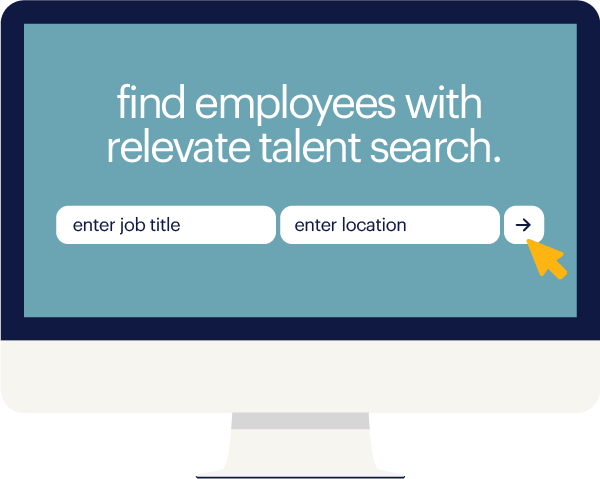Access to top talent comes with a steep price of admission these days, as competition for candidates reaches an all-time high. For organizations where salary is no object, that's an easy barrier to overcome. But for businesses with more modest staffing budgets, where resources are constrained and flexibility around salary is non-existent, it's an obstacle that can seem almost too imposing to overcome.
Almost. Putting together a staffing strategy on a shoestring budget doesn't mean you have to forfeit the market's top candidates. With a little change to your approach, you'll be able to plan for and find the talent your business needs to reach the next level — all without breaking the bank. Here's what to do.
1. staff the surefire bets
All the steps for building an achievable and manageable staffing strategy regardless of budget still apply, but make sure you spend more time in the information-gathering phase than you would otherwise. When resources are tight, you need to become more selective with your staffing priorities. The departments you decide to bolster with extra personnel should be those that come with the promise of high-impact output — the kind that can immediately affect your bottom line.
-
Sit down with your company's key decision-makers to discuss their main business priorities and plans for growth.
-
Evaluate the expected ROI for each growth initiative, and identify the one that will have the biggest impact on your business.
-
Do all you can with the resources at your disposal to start building a talent pipeline. This will help you hire faster (and more cost-effectively) in the future.
| get the most out of your staffing budget by only hiring for initiatives that have clear ROI. |
|
2. hire agile talent
Once you've identified the most profitable areas to pursue, it's time to find talent. However, hiring full-time employees can be expensive, so if you're trying to make your staffing strategy work on a shoestring, look to alternative hiring arrangements. McKinsey estimated that freelancers make up about 30 percent of the global workforce, and that number is only expected to grow as employers start turning to them in greater numbers. Microsoft, for instance, has two-thirds as many freelancers as full-time staff. Working with freelance or agile talent can get your business the skill sets it needs to achieve growth objectives without having to incur the costs of making full-time hires.
Outside talent can help you if:
-
You don't have the budget to cover employee taxes, healthcare or additional office supplies and space.
-
You have short-term projects that require niche skills, but would have limited need for their expertise afterwards.
-
You need more time to decide. Freelancers come with a built-in trial period, enabling you to both evaluate talent and the impact of their output. That way, you'll have more data to inform your full-time hiring decision.
| agile talent can provide you with the skill sets you need at a much lower cost. |
|
3. compete on benefits
Much of the challenge of building a staffing strategy with limited resources is less about planning and more about securing the talent you need. Businesses are competing with one another to offer better pay in an effort to attract in-demand candidates, and while you may not have the funds to outbid your biggest competitors, you do have the ability to get a little creative with your perks and benefits.
Sixty-one percent of employee respondents to our Work Perks and Benefits study said they would accept a lower salary if a company had a great benefits package — this isn't just small-business wishful thinking, offering outstanding perks can really help level the playing field when higher salaries aren't an option.
-
Early Friday releases were the number-one perk that employees wanted to see the most. If you manage productivity during the week, this is a great low-cost incentive that carries major weight in job seekers' minds.
-
Another cost-effective benefit that also happens to be highly prized is the option for flexible scheduling and remote work. All the work you need your employees to get done will still get done, just with greater flexibility around where and when.
-
While it's less of a benefit and more of a feature, emphasize how, given your company's smaller size, employees will have more opportunities for growth. Lack of career growth is one of the top reasons employees leave. Show them the possibility of a pathway forward, and they may be more willing to make a concession on salary.
| affordable perks like early friday releases and flexible/remote work options are priceless incentives for today's job seekers. |
|
spend wisely
Building a staffing strategy on a tight budget can be constraining, but by focusing on these areas, you should be able to assemble a workforce of top-performers at a price that's right for your organization.
While reducing costs is no doubt a primary concern for your business, the upfront investment of working with an expert who specializes in cost-effective staffing strategies could actually save you money in the end. Staffing agencies can help you not only find highly qualified candidates fast, but develop long-term talent strategies that are tailored to your business and budget. When you consider the high costs of making a bad hire — along with the negative business impact of a long, drawn-out candidate search — working with a staffing expert could be a worthwhile investment.
For more tips you can use to build your staffing strategy, visit the Randstad Learning Center. Or if you're interested in additional support, get in touch with us today to see all the ways that Randstad can help your business.








